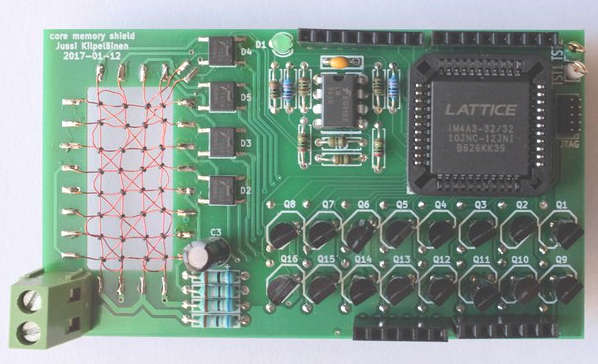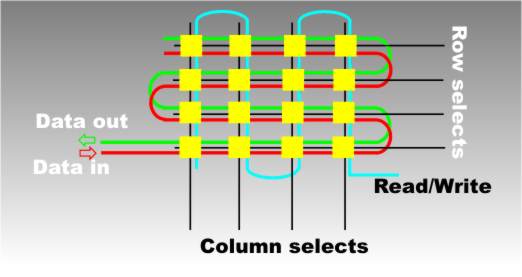For those interested in going down memory lane, Jussi Kilpelainen has put together a 32-bit demo of core memory as an Arduino shield that you can buy as a kit for $39.90. The really good part is that the core assembly is clearly displayed.

Core memory came as a big advance on the use of mercury delay lines first used in ENIAC . Its headline advantage of is that it keeps its data when you remove the power. This means that computers of old could be switched off and when you switched them on they continued from where you left off. See my explanation How Memory Works to discover more.
You might also question whether there a real use for 32 bits of magnetic memory? Perhaps not, and Jussi Kilpelainen himself describes it as "hilariously impractical." but it is certainly useful for educational purposes as it demonstrates how magnetic core memory works. It has an array of magnetic cores threaded onto an x,y grid of wires and a read/write line is threaded through all of them. The addressing is done by activating the row and column line that selects the core you want to read or write and then using the data line to read or write the magnetization of the core. A recent project on Hackaday.IO adds LEDs so that you can see the bits flip.

The kit is available on Tindie and the documentation for it is downloadable here. What is really surprising is that it uses a CPLD - a Complex Programmable Logic Device. This is supplied pre-programed in the kit, but you can download the VHDL code to get it to do the job from the website. Personally I would have used some logic gates to do the job but each to his own design decisions.
